If you have brown spots on your cactus, don’t worry! There are a few things you can do to get rid of them. First, try to remove the affected area with a sharp knife. If that doesn’t work, you can try using a diluted bleach solution. Just be sure to rinse the cactus well afterwards. You can also try using a fungicide. If you’re not sure what to use, ask your local nursery or garden center for advice.
How to Identify Cactus Brown Spots?
If your cactus has brown spots, it’s important to identify the cause so you can take steps to prevent it from happening again. There are several possible causes of brown spots on cactus, including sun damage, pests, and disease.
If your cactus is in a sunny spot, it can get sunburned, which will cause brown spots to form. Sun damage is the most common cause of brown spots on cactus. To prevent sun damage, make sure to give your cactus plenty of shade.
Pests can also cause brown spots on cactus. If you see any pests on your cactus, such as aphids or mealybugs, you’ll need to treat them immediately. Otherwise, they can cause serious damage to your plant.
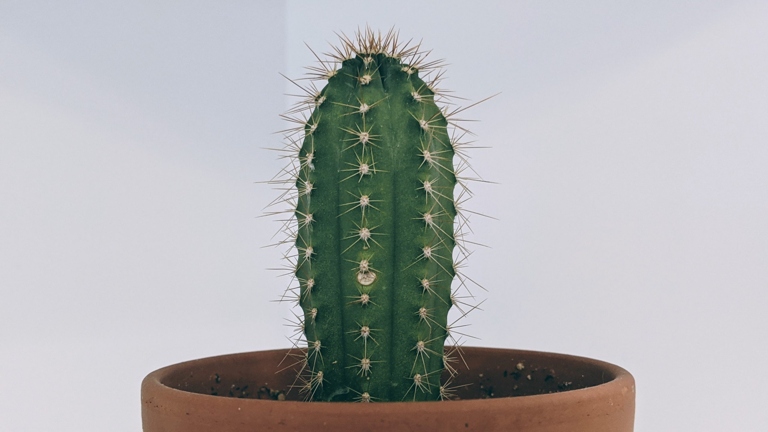
If you see any signs of disease, such as mold or mildew, you’ll need to treat it right away. Otherwise, it can spread to other parts of the plant and kill it. Disease can also cause brown spots on cactus.
Once you know what’s causing the problem, you can take steps to prevent it from happening again. If you’re not sure what’s causing the brown spots on your cactus, you can take a sample of the affected tissue to a garden center or nursery for identification.
Why Does My Cactus Have a Brown Spot?
Too much water can also cause the cactus to rot, which will cause the entire plant to turn brown. One common cause is sunburn, which can happen when the plant is exposed to too much direct sunlight. This can happen if the cactus is moved to a sunnier spot or if the sun’s rays are magnified through a window. Finally, pests such as mealybugs and scale insects can also cause brown spots by sucking the sap out of the plant. If you see brown spots on your cactus, inspect the plant carefully to determine the cause. Cacti are susceptible to brown spots for a number of reasons. Once you know the cause, you can take steps to prevent it from happening again. Another cause of brown spots is overwatering, which can lead to fungal growth.
Excess Sun Exposure
If you notice your cactus starting to develop brown spots, move it to a shadier spot. You may also need to reduce the amount of water you give the plant, as too much water can also lead to brown spots. While cactus need some sun to grow, too much sun can cause the plant to develop brown spots. When it comes to getting rid of brown spots on cactus, excess sun exposure is one of the main culprits.
1. Move Your Plant Indoors
Here’s how to do it: When the weather outside turns cold, it’s time to move your cactus indoors.
A south-facing windowsill is ideal. 1. Choose a spot in your home that gets plenty of bright, indirect sunlight.
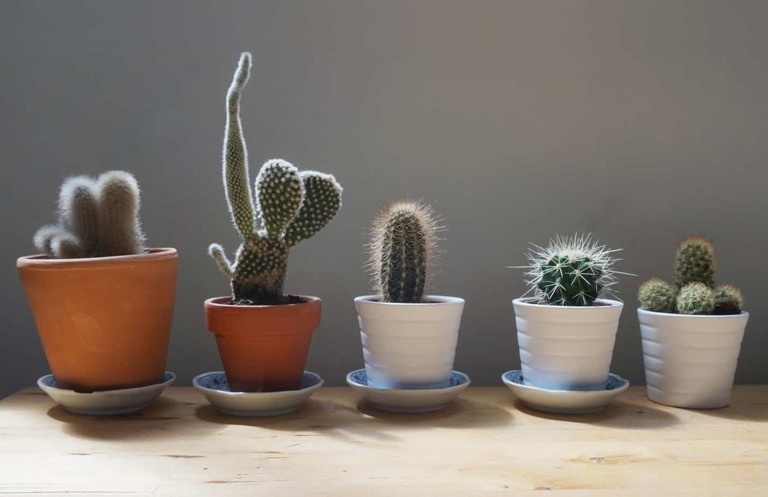
Carefully inspect the roots and trim away any that are brown or mushy. Gently remove your cactus from its pot. 2.
Repot your cactus in a pot that is slightly larger than the previous one. 3. Use a well-draining potting mix.
4. Water your cactus sparingly, only when the soil is dry to the touch.
Keep an eye out for brown spots on your cactus. If you see any, trim them away with a sharp knife. 5.
With a little care, your cactus will thrive indoors all winter long!
2. Provide Additional Shade
This can be done by placing it in a shaded area or by using a shading cloth. If your cactus is getting too much sun, it’s likely to develop brown spots. To prevent this, provide additional shade for your cactus. If your cactus already has brown spots, you can try to remove them by gently rubbing the affected area with a soft cloth.
Improper Watering
Cacti are very drought-tolerant plants, so they don’t need a lot of water. When watering your cactus, make sure to only give it a small amount of water and allow the soil to completely dry out before watering again. If you’re noticing brown spots on your cactus, it’s likely due to improper watering. In fact, too much water can be detrimental to their health. If you’re unsure how much water your cactus needs, it’s always better to err on the side of too little rather than too much.
Check How Moist the Soil Is
To help your cactus recover, you’ll need to check the moisture level of the soil and water accordingly. If you’re noticing brown spots on your cactus, it’s likely due to the plant being too dry.
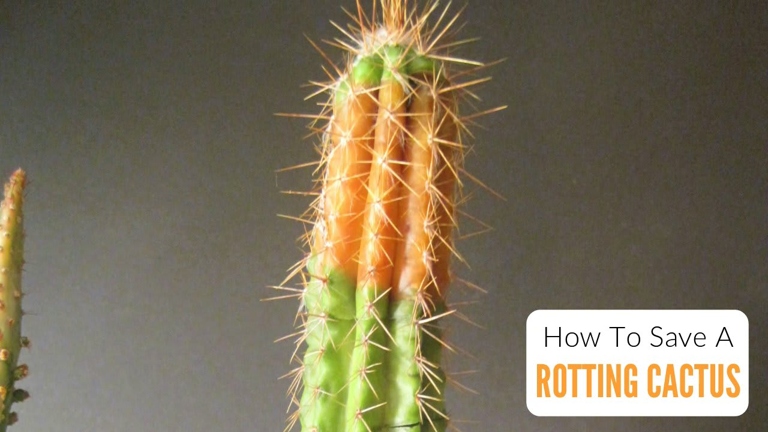
If the soil is dry to the touch, it’s time to water. To check the moisture level of the soil, simply stick your finger into the potting mix. Be sure to give your cactus a good soaking, as they prefer to dry out completely between waterings.
Allowing the roots to sit in water can lead to root rot, which will kill your cactus. If you find that you’re watering your cactus more frequently than every two weeks or so, you may need to repot into a pot with better drainage.
By following these simple tips, you can help your cactus recover from brown spots and prevent them from happening in the future.
Temperature Stress Can Damage the Cells
Cactus leaves are susceptible to temperature stress. When the temperature gets too hot or too cold, the cells in the leaves can be damaged. This can cause the leaves to turn brown and eventually die.

If the leaves have already started to turn brown, you can try to remove the damaged leaves. If the temperature does get too extreme, you can try to move the cactus to a more moderate location. To prevent temperature stress, make sure to keep your cactus in a location that is not too hot or too cold.
1. Relocate the Cacti Pots
If possible, raise the pots off the ground so that the air can circulate around the plants. Place them in an area with bright, indirect sunlight. If you notice brown spots on your cactus, it’s important to take action right away. The first step is to relocate the cacti pots.
If the brown spots are on the top of the plant, it’s likely that the plant is getting too much sun. If the spots are on the bottom of the plant, the plant is probably not getting enough sun. Once you’ve relocated the cacti, take a close look at the plants.
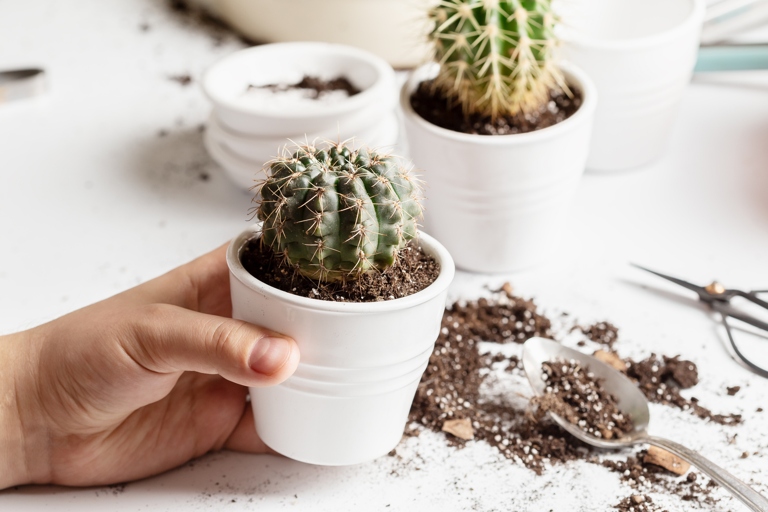
They will be able to help you figure out what’s causing the problem and how to fix it. If you can’t determine the cause of the brown spots, it’s best to consult with a professional.
2. Provide Insulation When Cold
When the temperature outside begins to drop, one of the best things you can do for your cactus is to provide insulation. This will help to protect the plant from the cold and prevent brown spots from forming.

One way to provide insulation is to wrap the cactus in a layer of burlap or other breathable material. This will help to keep the roots warm and protected. This will help to trap heat and protect the plant from the elements. Another option is to place the cactus in a pot that is slightly larger than it and fill the space around the plant with straw or other insulation.
This will help to ensure that the plant does not suffer any damage from the cold weather. If you live in an area where the temperatures are prone to dipping below freezing, it is also a good idea to bring your cactus indoors.
Pest Infestation Causing Spots on Cactus
These pests suck the sap out of the cactus, causing the plant to become dehydrated and the leaves to turn brown. If you have a cactus that is covered in brown spots, it is likely due to a pest infestation. The most common pests that cause this problem are scale insects and mealybugs.
Be sure to follow the directions on the label carefully. You can find these products at your local garden center or online. To get rid of these pests, you will need to treat your cactus with an insecticide.
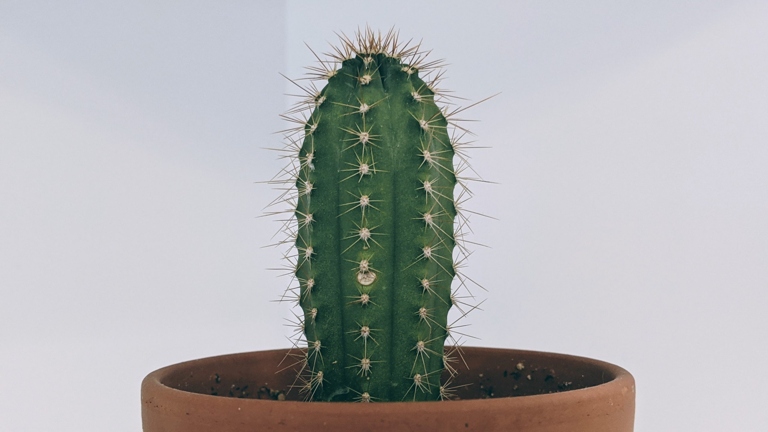
Water it regularly and fertilize it with a high-quality cactus food. To prevent these pests from returning, it is important to keep your cactus healthy. These simple steps will help to keep your cactus strong and healthy, making it less susceptible to pests.
Inspect the Cacti for Any Presence of Pests
Pests can cause serious damage to cacti, and in some cases, can even kill the plant. If you notice any brown spots on your cactus, it’s important to inspect the plant for any presence of pests.
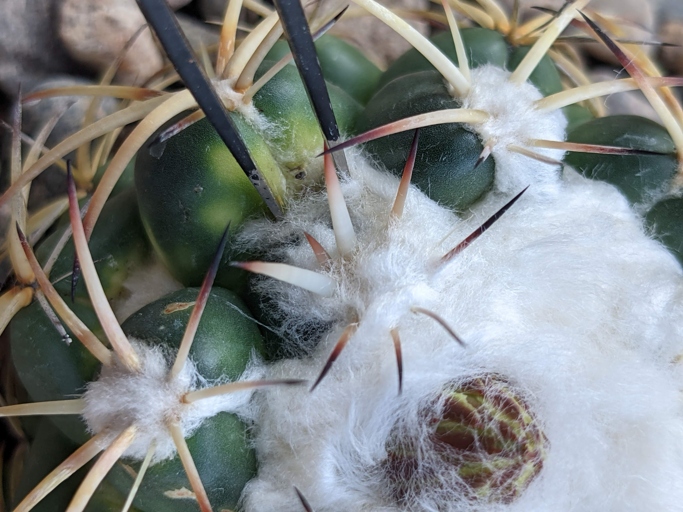
These holes are caused by pests boring into the plant to feed on its juices. There are a few telltale signs that pests are present on a cactus. These spots are caused by pests feeding on the plant’s tissue. First, you may notice small holes in the plant’s stem. Second, you may see brown or black spots on the plant.
You can use a pesticide, or you can remove the affected parts of the plant. There are a few different ways to get rid of pests on cacti. If you suspect that your cactus has pests, it’s important to take action immediately. If the infestation is severe, you may need to dispose of the plant entirely.
Inspect your plants regularly for signs of pests, and take action immediately if you see any. Prevention is the best way to deal with pests on cacti.
Fungal Disease
Fungal diseases are one of the most common problems that cactus growers face. There are many different types of fungi that can infect cactus plants, and they can cause a variety of problems, from brown spots on the leaves to complete defoliation.

Most fungal diseases are caused by waterlogged soil, so the first step in preventing them is to make sure your cactus is planted in well-draining soil. If you live in an area with high humidity, you may also need to provide additional ventilation to prevent the fungus from taking hold.
You can also try using a fungicide, but be sure to follow the directions carefully, as some fungicides can be harmful to cactus plants. If your cactus does develop a fungal disease, the best course of action is to remove the affected parts of the plant and destroy them.
1. Discard Infected Portions
Dispose of the infected tissue in the trash so it doesn’t spread to other plants. If the infection is severe, you may need to treat your cactus with a fungicide. If you notice brown spots on your cactus, it’s important to take action immediately. You should also sterilize your knife with rubbing alcohol to prevent the fungus from spreading. These spots are usually caused by a fungal infection and can quickly spread to other parts of the plant. The best way to deal with this problem is to cut away the affected portion of the cactus with a sharp knife.
2. Apply Fungicide
Fungicide can help get rid of the problem and prevent it from coming back. If you’re noticing brown spots on your cactus, it’s time to take action.
Here’s what to do:
Remove any affected leaves or stems from the plant. 1.
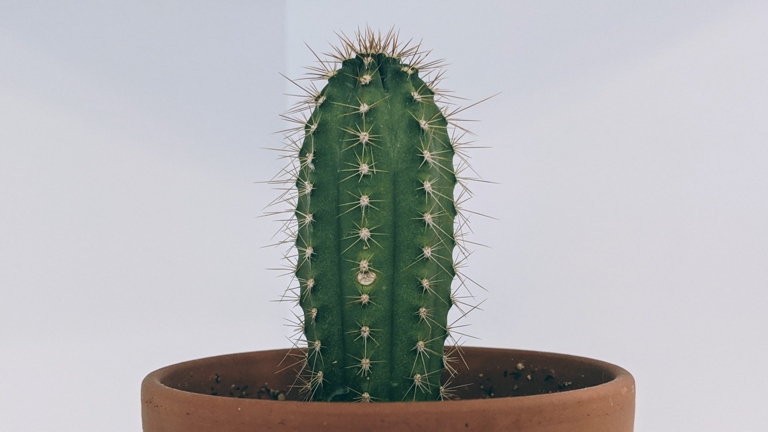
Spray the plant with fungicide, being sure to cover all of the brown spots. 2.
3. Place the plant in a sunny location to help it recover.
4. Keep an eye on the plant and repeat the process if necessary.
With a little care, you can get rid of brown spots on your cactus and keep your plant healthy and happy.
3. Avoid Humid Conditions
If you cannot control the humidity, make sure to water the cactus less frequently and keep the plant in a well-ventilated area. If you live in an area with high humidity, it is best to grow cactus in a pot so that you can control the amount of moisture the plant is exposed to. Cactus thrive in dry conditions and do not do well in humid conditions. To avoid brown spots on cactus, avoid humid conditions.
Rust Spots on Cactus
While it may be unsightly, rust spot disease is not fatal to cacti. If you notice brown rust spots on your cactus, don’t panic. The good news is that there are a few things you can do to get rid of the rust spots and prevent them from coming back.
Then, using a cotton swab or soft brush, apply a fungicide to the spots. Be sure to follow the directions on the fungicide label. To get rid of rust spots, start by trimming away any affected leaves or stems.
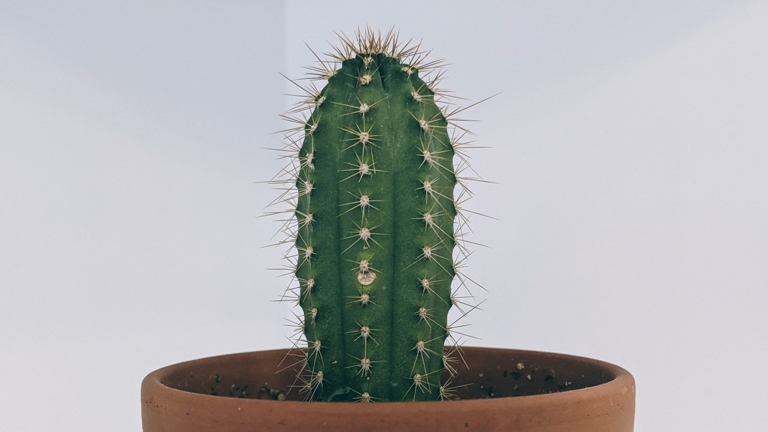
To prevent rust spots from coming back, it’s important to keep your cactus healthy. Water it regularly and give it plenty of sunlight. If you live in an area with high humidity, consider moving your cactus to a drier location.
1. Remove and Bury the Infected Clalode
The best way to get rid of the infection is to remove and bury the affected area. This will prevent the infection from spreading and allow your cactus to heal. If your cactus has brown spots, it’s likely suffering from a fungal infection.
Be sure to disinfect your knife before and after use. Once the affected area has been removed, bury it in a pot of soil. To remove the affected area, use a sharp knife to cut away the brown tissue.
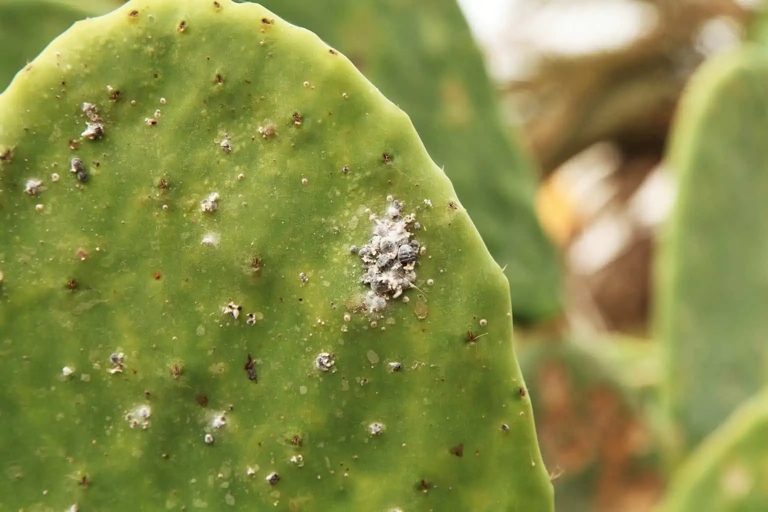
Your cactus will need time to heal, so be sure to give it plenty of water and sunlight. With proper care, your cactus will soon be healthy and free of brown spots.
2. Isolate the Infected Plant
Isolating the infected plant is the first step in getting rid of the problem. If you have a brown spot on your cactus, it’s important to take action right away.

If the plant is heavily infested, it’s best to dispose of it. Start by removing the affected plant from its pot. Inspect the roots and stem for any signs of rot or disease.
If the plant is only mildly infested, you can try to save it by trimming away the affected parts. Disinfect your pruning tools before and after use to prevent the spread of the disease.
And be sure to quarantine any new plants before adding them to your collection. Be sure to clean and disinfect your potting soil and containers. Once you’ve isolated the infected plant, it’s important to take steps to prevent the problem from spreading to your other plants.
3. Apply Preventive Fungicide on Other Cacti
To prevent the spread of the fungus, and to protect other cacti, it’s important to apply a preventive fungicide. If you’re noticing brown spots on your cactus, it’s likely due to a fungus.
There are a few different fungicides that can be used for cacti, but make sure to choose one that is specifically labeled for use on cacti. Apply the fungicide according to the directions on the label.
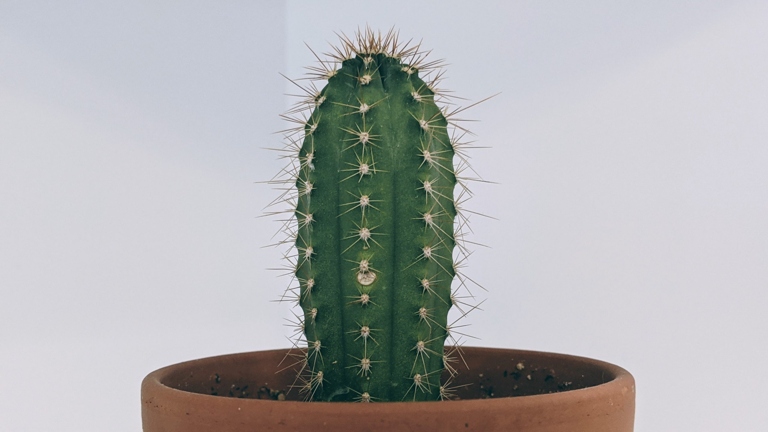
If you have an infected cactus, it’s best to keep it isolated from other cacti. Be sure to clean your tools after working with an infected cactus, and avoid touching other cacti with the same tools. It’s also important to take measures to prevent the spread of the fungus in the first place.
Fertilizer Overdose Can Burn the Cactus
But what you may not know is that fertilizer overdose can actually cause this problem. If you’ve ever had a brown spot on your cactus, you know how unsightly it can be.
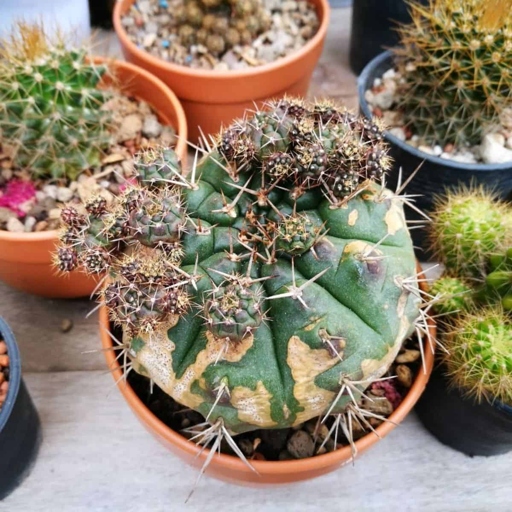
And while a little bit of fertilizer can be beneficial, too much can actually burn the plant. When you fertilize your cactus, you’re essentially giving it a concentrated dose of nutrients.
The chemicals can cause the cactus to break down its own tissue, leading to brown spots. This is especially true if you’re using a chemical fertilizer.
If you think your cactus has been over-fertilized, the best thing to do is to flush the plant with water. This will help to remove any excess fertilizer from the roots.
Once the plant has been flushed, you can then start to reduce the amount of fertilizer you’re using. And if you’re using a chemical fertilizer, you may want to consider switching to a more natural option.
1. Leach Or Rinse Off Excess Fertilizer
You can also prevent brown spots by being careful not to over-fertilize your cactus and by watering it regularly. If you notice brown spots on your cactus, it’s likely due to excess fertilizer. To get rid of the spots, simply leach or rinse off the excess fertilizer with water.
2. If Necessary, Repot in Fresh Potting Soil
If you notice your cactus has brown spots, it may be time to repot it in fresh potting soil. Be sure to water the cactus well after repotting. You can do this by gently removing the cactus from its current pot and placing it in a new pot with fresh potting soil.
Be sure to loosen the roots before repotting and water the cactus well afterwards. If you think your cactus may be rootbound, you can also try repotting it in a larger pot.

If you don’t think repotting is necessary, you can try other methods of getting rid of brown spots on cactus, such as using a cotton swab dipped in rubbing alcohol to remove the spots.
Inadequate Air Circulation
If your cactus has brown spots, it could be a sign of inadequate air circulation. If the spots are on the bottom of the plant, it’s likely that the plant is not getting enough air. If the spots are on the top of the plant, it’s likely that the plant is not getting enough light.
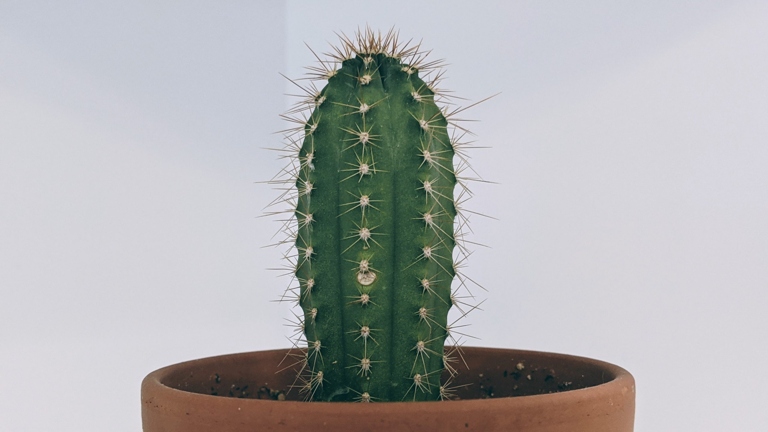
To improve air circulation, move your cactus to a spot where it will get more light and more air. This will help the plant to get more air. If the spots are on the bottom of the plant, you can also try turning the pot upside down so that the plant is resting on its top.
This will help the plant to get more light and air. If the brown spots are on the top of the plant, you can try cutting off the affected leaves.
If you see brown spots on your cactus, it’s important to take action to improve the air circulation around the plant. By taking these steps, you can help your cactus to stay healthy and free of brown spots.
1. Open the Windows and Doors
If your cactus has brown spots, it’s time to open up the windows and doors to let in some fresh air. If the spots are large or numerous, you may also want to consider repotting the cactus in a drier, more well-drained potting mix. These spots are usually caused by too much moisture in the air, so by opening up the windows and doors you’ll help to reduce the humidity and allow the cactus to dry out.
2. Make use of the Exhaust Fan
If you want to get rid of brown spots on your cactus, make use of the exhaust fan. Just be sure to keep the fan on for a few hours each day to get the best results. This will help to remove the brown spots and also prevent them from coming back.
High Humidity Triggers Fungal Growth
When the air is too moist, it creates the perfect environment for fungi to thrive. This can lead to brown spots on cacti, which are unsightly and can eventually kill the plant. High humidity is one of the main triggers for fungal growth on cacti.
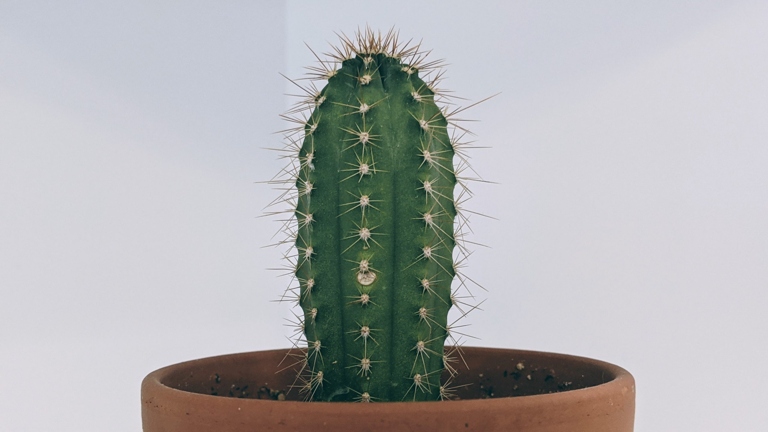
Second, keep the humidity in your home or office low. And finally, if you see any brown spots, remove them immediately. First, make sure that you’re not over-watering it. There are a few things that you can do to prevent brown spots from appearing on your cactus.
If you follow these simple tips, you should be able to keep your cactus healthy and free of brown spots.
What to Do?
If the spots are still not coming off, you can try using a weak solution of bleach and water. First, you can try to remove the spots with a soft cloth or a cotton swab. If the spots are stubborn, you can use a toothbrush or a Q-tip to gently scrub them off. Be sure to test the solution on a small area of the cactus first to make sure it doesn’t damage the plant. Once you’ve removed the spots, be sure to keep the cactus out of direct sunlight to prevent new spots from forming. If you have brown spots on your cactus, there are a few things you can do to get rid of them.
Frost Damage
The good news is that there are a few things you can do to get rid of brown spots on cactus and prevent further damage. When it comes to frost damage, cacti are particularly susceptible.
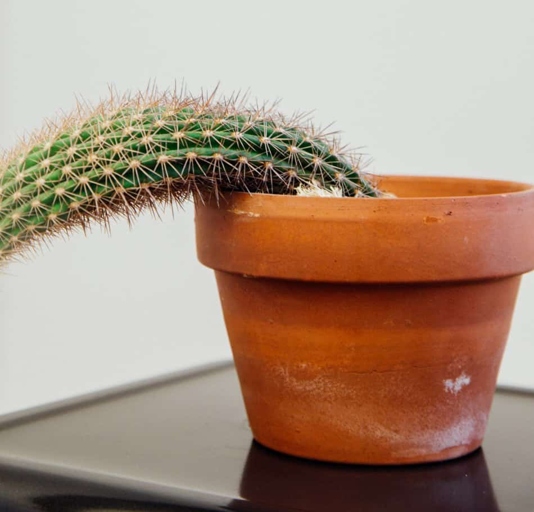
This will help the plant to focus its energy on healing the damaged areas. First, it’s important to remove any dead or dying leaves or stems.
Too much water can actually do more harm than good. Next, you’ll want to water the cactus deeply, but be sure not to overdo it.
Finally, give the plant some time to recover. With a little TLC, your cactus should be back to its old self in no time.
1. Relocate the Cacti During the Night
This gives the plant time to absorb the water before the heat of the day sets in. When you water your cactus, be sure to do it in the morning. If you water your cactus at night, the water will sit on the surface of the plant and can cause brown spots.
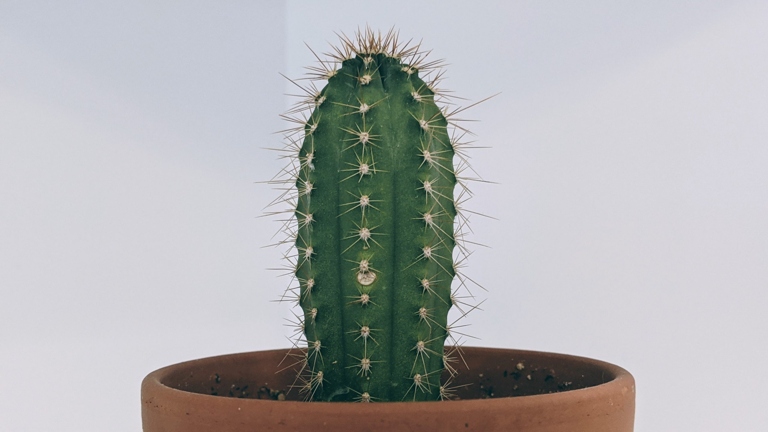
If you live in an area with high humidity, you may also need to mist your cactus regularly to prevent the leaves from getting too dry. To prevent brown spots, always water your cactus in the morning and make sure the plant has good drainage.
2. Protect the Cactus Plant by Keeping It Warm
You can also put it in a south-facing window to make sure it gets enough light. You can also mist it with water to keep it cool. If you want to protect your cactus plant from brown spots, you need to keep it warm. If you live in a hot climate, you should make sure your cactus plant is in a shady spot. However, they can still get brown spots if the temperature gets too low. Cactus plants are native to warm climates, so they are used to warm temperatures. If you live in a cold climate, you should keep your cactus plant indoors during the winter.
3. Warm the Area Up with Lighting
This will help the cactus to heal and prevent further damage. If you have brown spots on your cactus, the first thing you should do is warm the area up with lighting.
You can use a grow light or a heat lamp to warm the area up. Place the light about 6 inches from the cactus and leave it on for 12 hours a day.
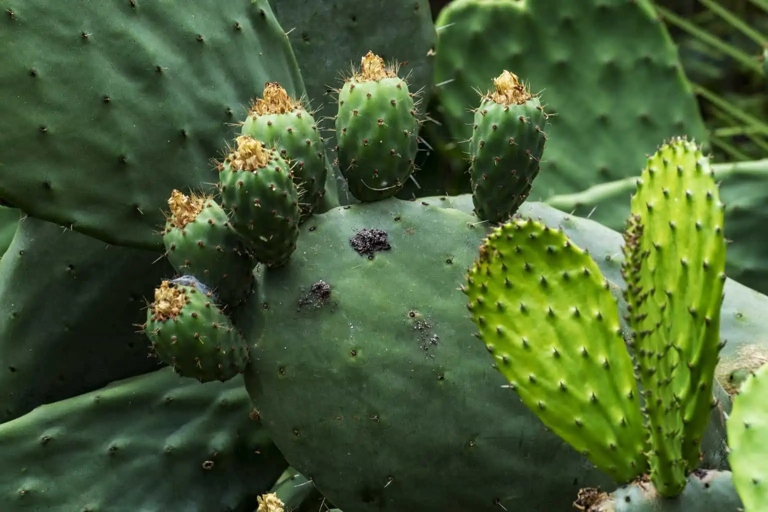
After a few days, you should see the brown spots start to fade. If they don’t, you can try using a higher wattage light or increasing the distance between the light and the cactus.
How to Prevent Brown Spots on Cactus?
Use a cactus fertilizer or a general-purpose fertilizer diluted to half strength. Finally, if the brown spots are on the leaves, you can remove them with a sharp knife. If it is in a pot, you may need to move it to a brighter spot. If you have a cactus that is starting to get brown spots, there are a few things you can do to prevent them from spreading. Third, fertilize the cactus every two weeks during the growing season. First, make sure that the plant is getting enough light. Cut off the affected leaves, being careful not to damage the rest of the plant. Allow the water to drain completely before putting the plant back in its pot. Second, water the cactus deeply, but only when the soil is dry.
Start with Disease-Free Cacti
Luckily, there are a few simple steps you can take to get rid of brown spots on cactus and keep your plants healthy. If you’re noticing brown spots on your cactus, it’s important to take action quickly to prevent the spread of disease.

If they’re due to a fungal infection, you’ll need to treat the plant with a fungicide. If the brown spots are caused by sun damage, you can move the plant to a shadier spot. First, it’s important to identify the cause of the brown spots.
If they’re due to a fungal infection, make sure to keep the plant’s environment clean and free of debris. If they’re caused by sun damage, make sure to give the plant plenty of shade. Once you’ve identified the cause of the brown spots, you can take steps to prevent them from coming back.
With a little bit of care, you can keep your cactus healthy and free of brown spots.
Use Clean and Good Quality Potting Soil
If you want to get rid of brown spots on cactus, it’s important to use clean and good quality potting soil. You can also add some organic matter to the soil to help improve its quality. When choosing potting soil, make sure to choose one that is well-draining and doesn’t have any chemicals in it. This will help to prevent the brown spots from coming back.
Find the Best Location
If the cactus is in the ground, try to find a spot where it gets partial sun. When it comes to getting rid of brown spots on cactus, the best location is key. If the cactus is in a pot, make sure to move it to a shady spot. Once you’ve found the perfect location, water the cactus deeply and then let it dry out completely before watering again.
Regulate Water and Fertilizer
If you want to get rid of brown spots on your cactus, you need to regulate the amount of water and fertilizer you give it. The best way to water your cactus is to soak the roots in water for a few hours, then let the plant dry out completely before watering it again. Too much water can cause the cactus to rot, while too little water will cause it to dry out and turn brown.

Too much fertilizer will burn the plant, causing the leaves to turn brown. Fertilizer can also cause brown spots on cactus if you use too much of it. The best way to fertilize your cactus is to mix a small amount of fertilizer into the water you use to soak the roots.
Use Fungicide as Preventive Measure
This type of fungus thrives in warm, humid conditions and can cause brown spots to form on the cactus. Fungicide can be used as a preventive measure against brown spots on cactus. By using a fungicide, you can prevent the fungus from growing and spreading.
Check and Remove Pests Regularly
Inspect your cactus regularly for pests, and remove them promptly if you find any. Pest control can be difficult, so it’s important to be vigilant and act quickly if you see any signs of pests. Pests can wreak havoc on your cactus, causing brown spots and other damage.
How Do I Get Rid Of Black Spots on My Cactus?
If you have black spots on your cactus, it’s likely that the plant is suffering from a fungal infection. The best way to get rid of the infection is to treat it with a fungicide. You can also try to prevent the infection from happening in the first place by keeping your cactus healthy and free from stress.
Can You Revive A Brown Cactus?
There are a few things you can do to revive your cactus and get rid of the brown spots. If your cactus has brown spots, it’s not necessarily dead.

If they’re on the surface, you can try gently scrubbing them off with a soft brush. First, check to see if the brown spots are on the surface of the plant or if they go all the way through.
You can try treating this with a fungicide, but it’s often difficult to get rid of the infection completely. If the spots go all the way through, it’s likely that your cactus is suffering from a fungal infection.
If your cactus is still alive, you can try giving it some extra TLC. Move it to a sunny spot and water it regularly. With a little time and patience, your cactus should start to look better.
What Does An Overwatered Cactus Look Like?
The plant will be wilted and the leaves will be drooping. The roots will be soggy and the plant will be difficult to move. An overwatered cactus will have brown spots on the leaves and stems. The cactus will need to be watered less often and allowed to dry out completely between watering.
Final Words
First, you can try to remove the spots with a cotton swab dipped in rubbing alcohol. Finally, if all else fails, you can always remove the affected area of the cactus with a sharp knife. If that doesn’t work, you can try using a diluted bleach solution. When it comes to brown spots on cactus, there are a few things you can do to get rid of them.
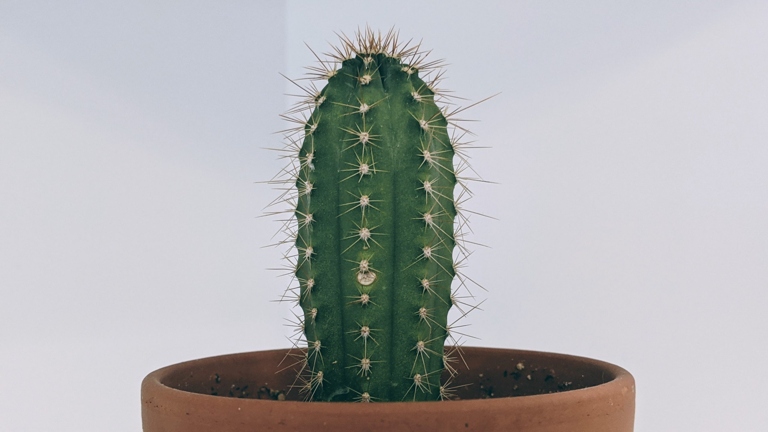
Finally, avoid using any chemicals or fertilizers on your cactus, as these can also cause brown spots. Prevention is always the best cure, so it’s important to take steps to avoid brown spots on cactus in the first place. One way to do this is to water your cactus regularly and evenly, as over- or under- watering can lead to brown spots. Additionally, be sure to provide your cactus with plenty of sunlight – but not too much, as this can also cause brown spots.
Frequently Asked Questions
1. How do brown spots form on cactus?
Brown spots are typically caused by too much sun exposure or by overwatering the plant. If the plant is not getting enough water, the leaves will start to turn brown and eventually fall off.
2. How can I get rid of brown spots on my cactus?
If the brown spots are caused by too much sun, you can try moving the plant to a shadier spot. If the spots are caused by overwatering, you can try letting the plant dry out for a few days before watering it again.
3. What is the best way to prevent brown spots on cactus?
The best way to prevent brown spots is to water the plant regularly and to make sure it gets enough sunlight.
4. Will brown spots kill my cactus?
No, brown spots will not kill your cactus. However, if the plant is not getting enough water or sunlight, it may die.
5. My cactus has brown spots, what should I do?
If your cactus has brown spots, you can try moving it to a shadier spot or letting it dry out for a few days.
Final thoughts
To conclude, brown spots on cactus can be removed by carefully cutting away the affected area with a sharp knife. If the brown spots are widespread, it may be necessary to destroy the plant. To prevent brown spots from occurring, cactus should be grown in full sun and well-drained soil.
